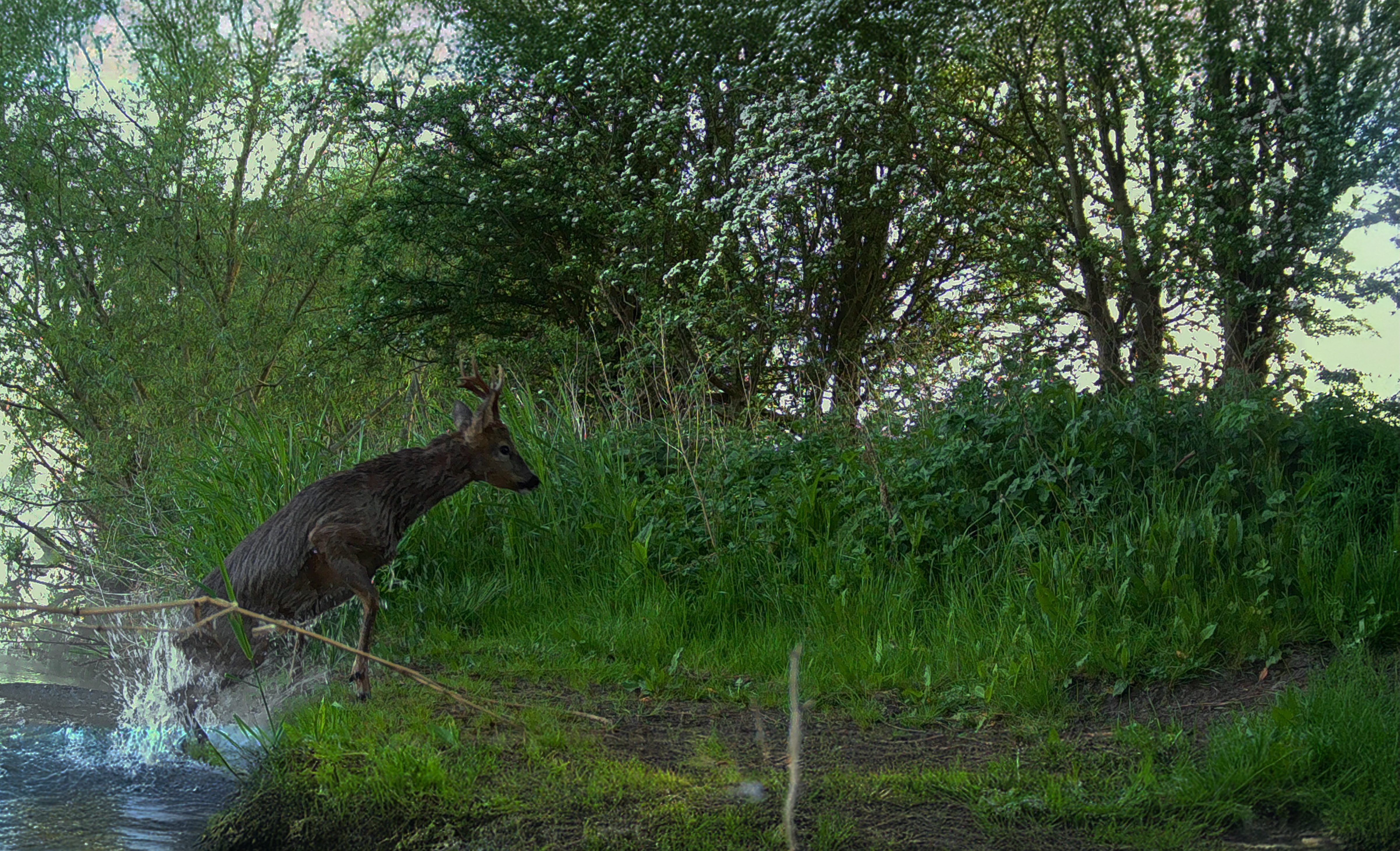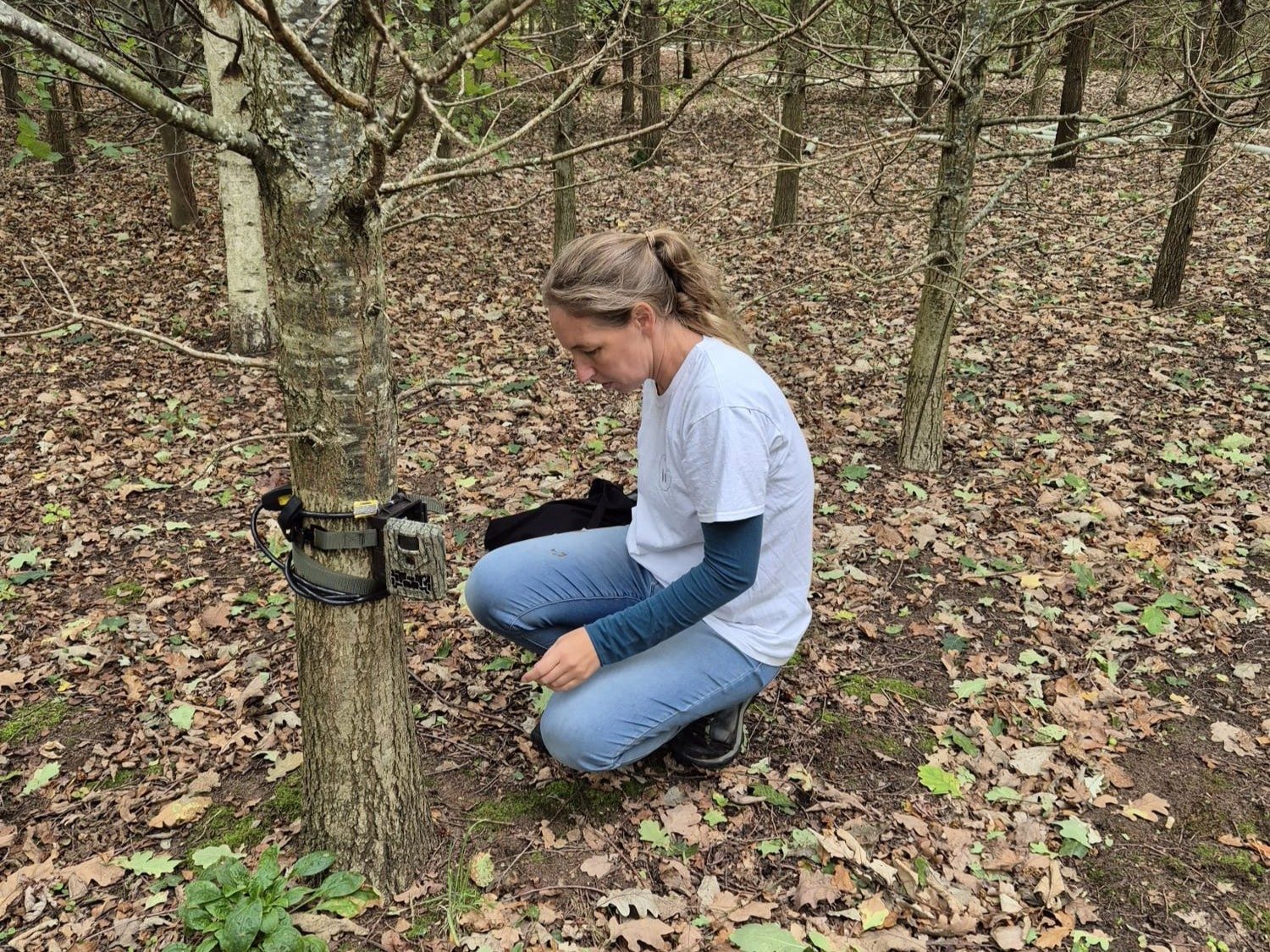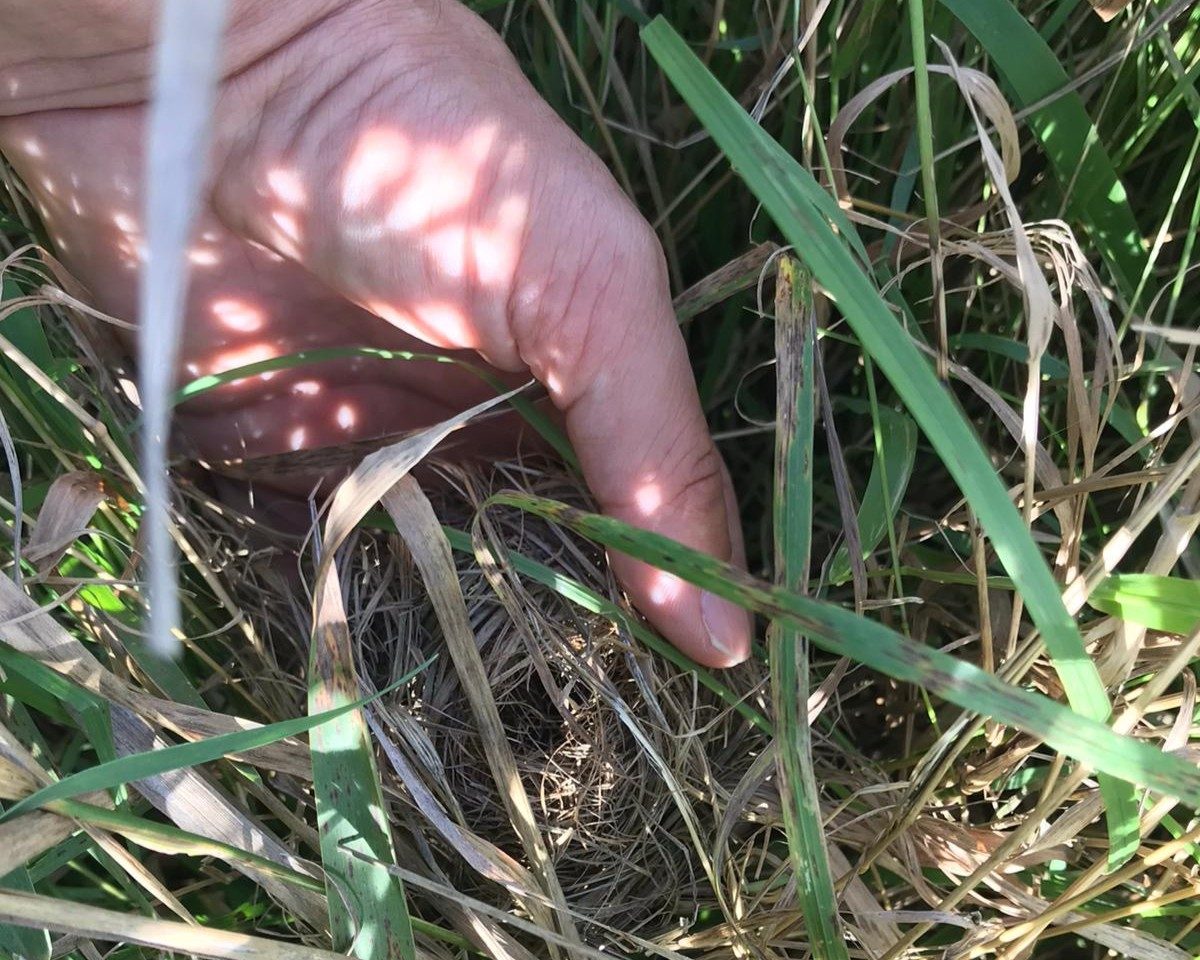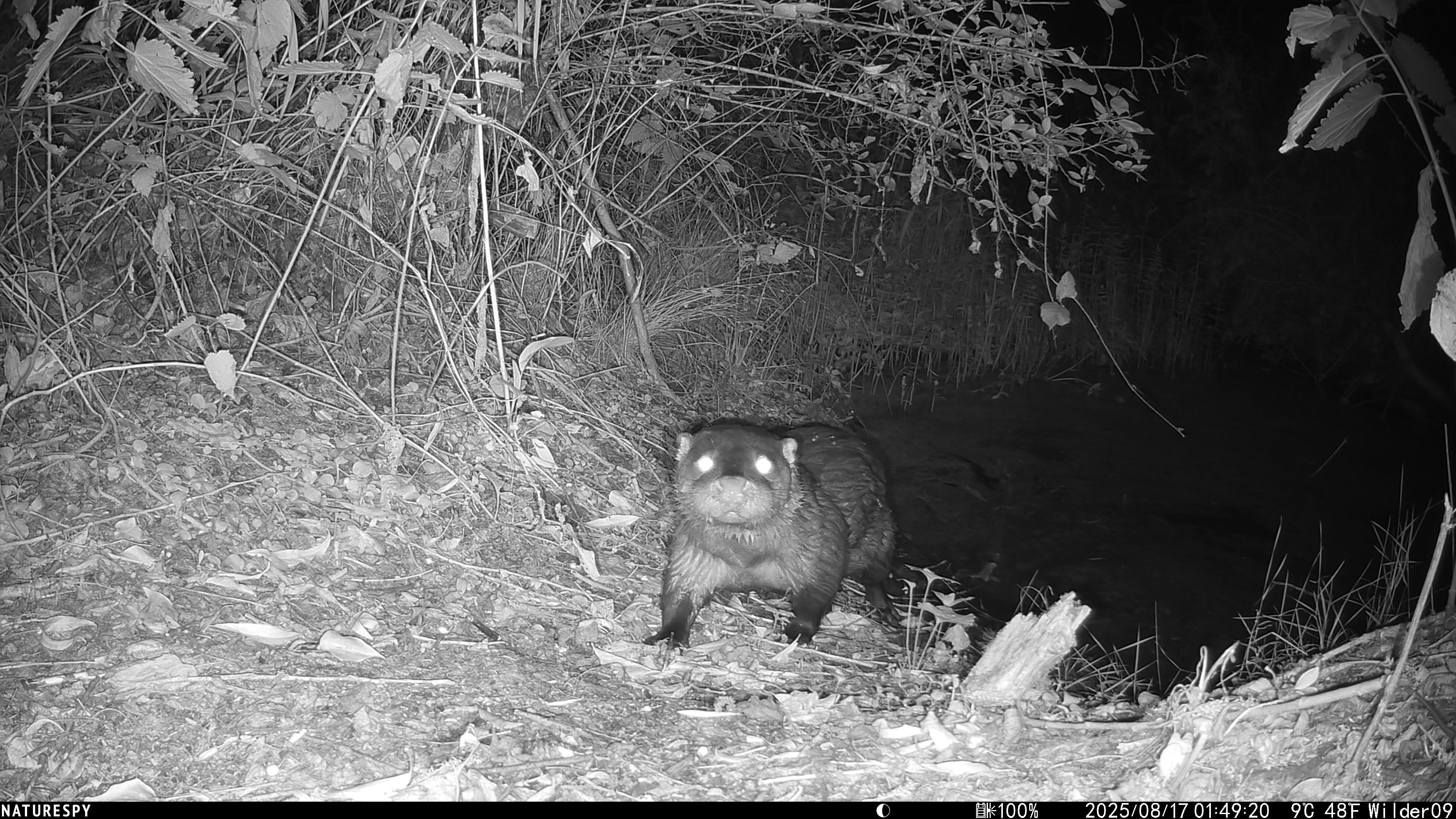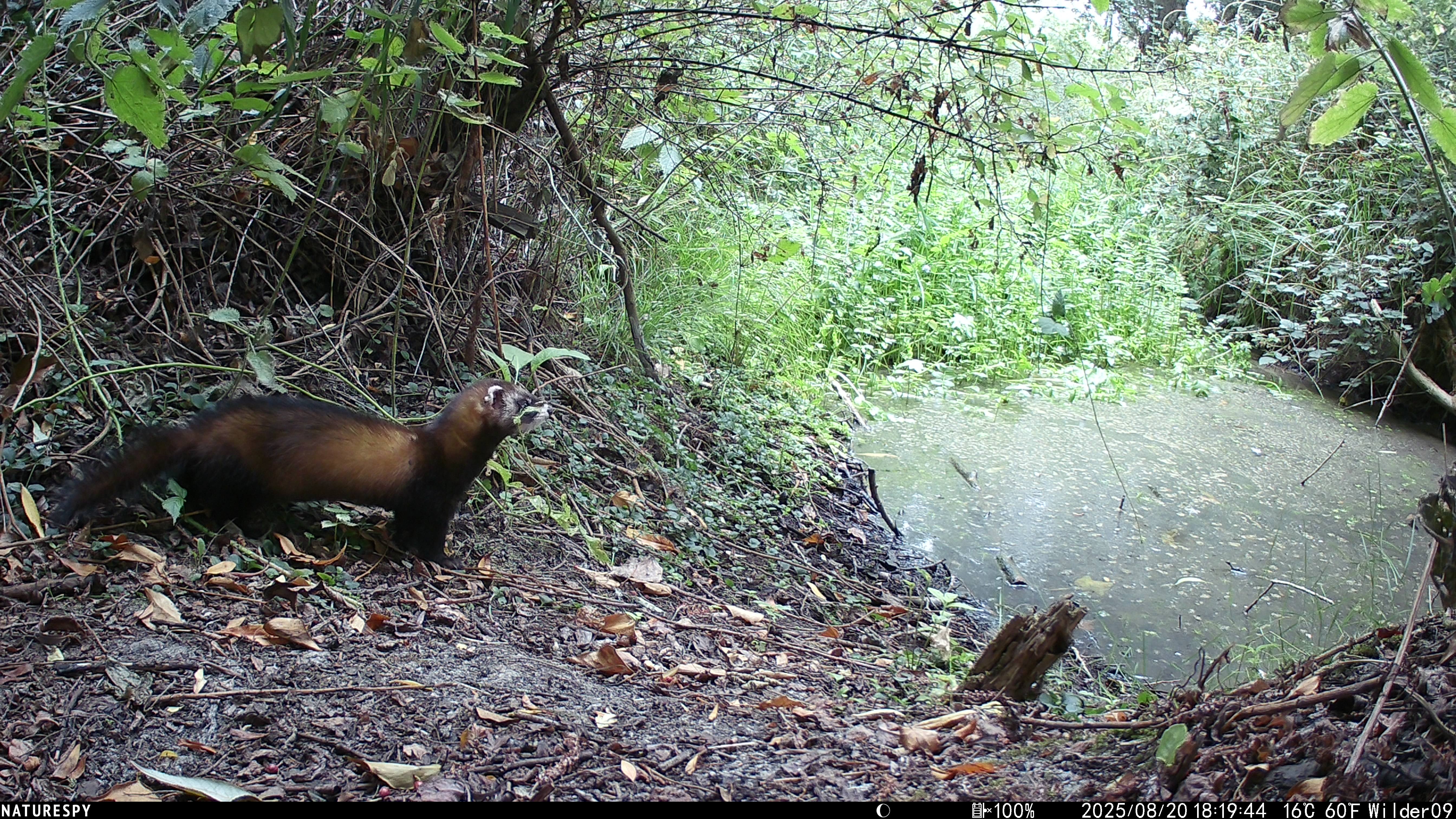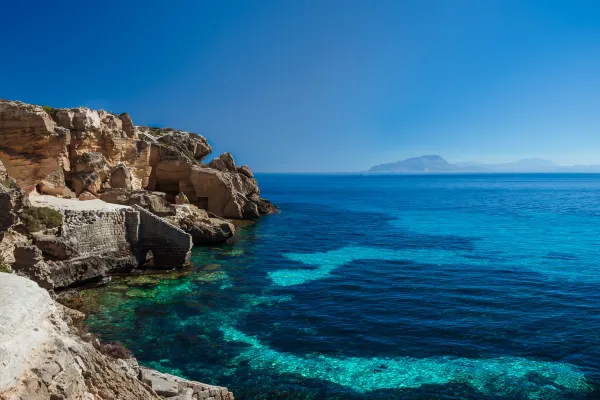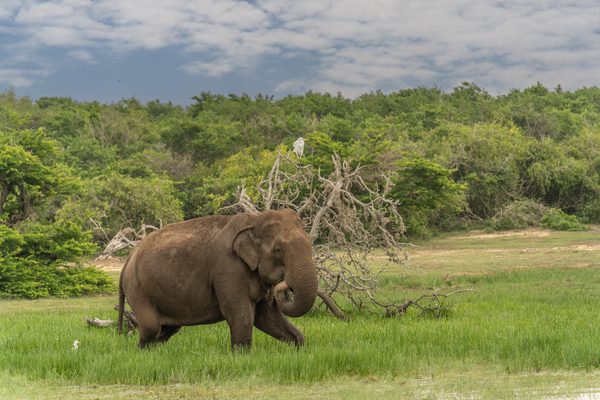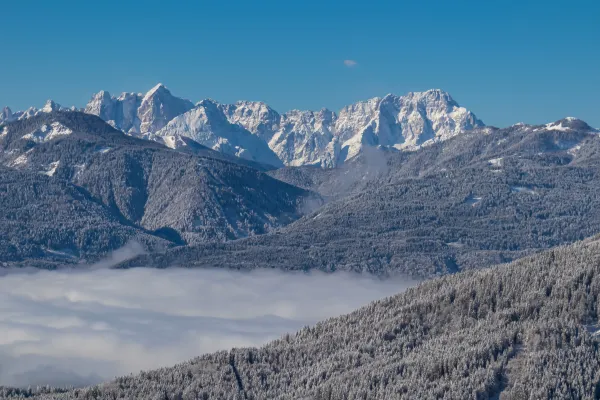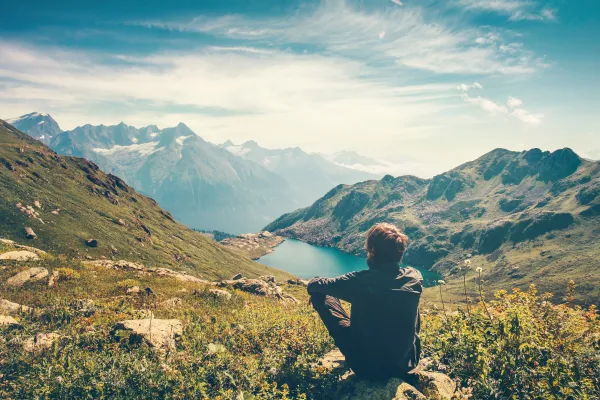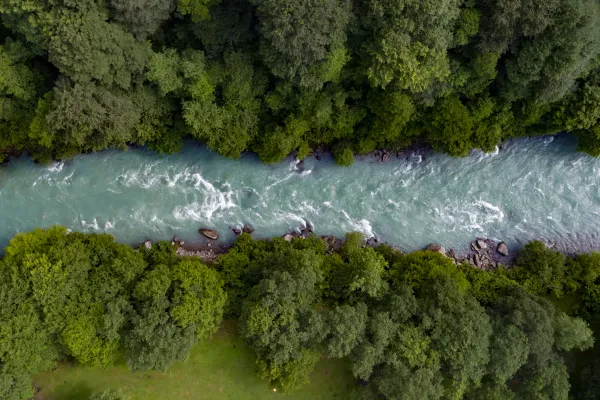Reviving the UK’s hidden woodlands
In the heart of the East Midlands, Wilder International is teaming up with the Sutton Bonington Climate Crisis and Biodiversity Action Group to breathe new life into the Sutton Bonington Nature Reserve, while also collaborating with the University of Nottingham to enrich the nearby hidden Diamond Jubilee Woodlands.
Their work goes beyond simple maintenance: from hands-on land management to detailed species and habitat surveys, they’re ensuring these green spaces thrive for both wildlife and people.
But it doesn’t stop there: through community working groups, Wilder International invites local residents to roll up their sleeves and take part in active conservation, fostering a deeper connection between people and the natural world right on their doorstep. We spoke to Lorraine Miller, co-founder of Wilder International, about the ongoing nature conservation measures being taken.
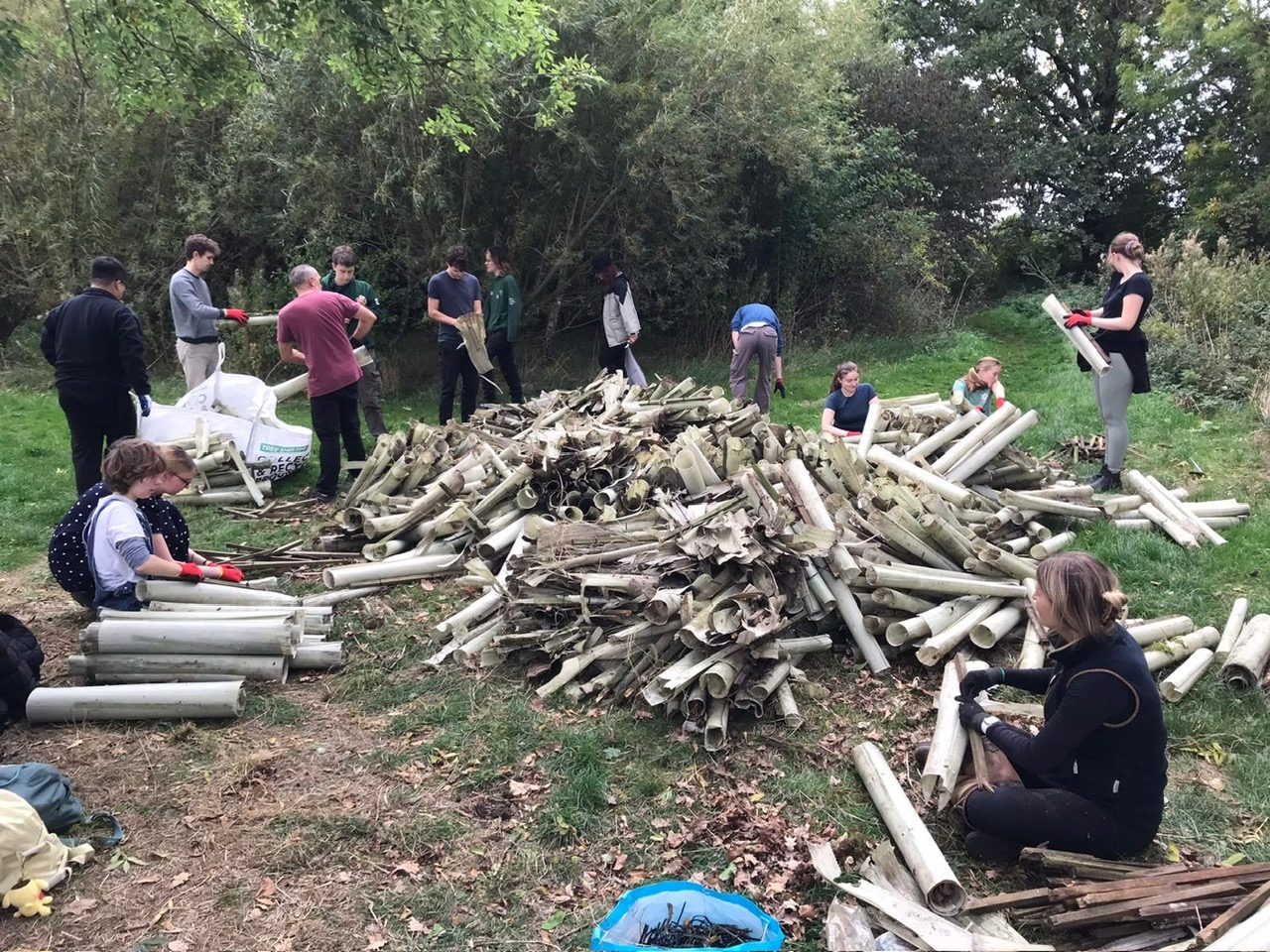
Lorraine, what inspired your focus on native species conservation in these woodlands?
I regularly work abroad with sanctuaries and rescue centres in Asia and Africa, which support incredibly charismatic species in very well-known habitats.
Most people are aware of habitat loss affecting orangutans in Indonesia or the illegal pet trade taking its toll on primates in Uganda, but many are unaware of the state of our wildlife and habitats here in the UK.
I am lucky enough to live in a very rural area, which is lush and green, but if you dissect the habitats even in these countryside areas, they are often just as fragmented as the rainforests many people are working hard to protect abroad, and require just as much attention, if not more, to make them viable for our native species to flourish.
We began monitoring the three woodlands we work in to find that they are incredibly rich in native species, but many of these animals are rarely seen or documented, and so have minimal support in terms of habitat management.
The species found here may not be as well known as an elephant or a gorilla, but protecting the invertebrates, amphibians, reptiles, and small mammals in the UK is incredibly important, as these species really are the basis of the food chain, instrumental in nature’s recovery and the foundation of the ecosystem.
What have been some significant milestones along the way?
We have only been registered as a non-profit since the beginning of 2025, and the UK native woodland work in Sutton Bonington was one of the first conservation projects we took on.
In collaboration with the local community group and the University, we have seen many remarkable improvements to all three sites, such as new hedgerows, clearing of overgrown brush and the removal of over 3000 degraded tree guards. We have engaged with over 80 volunteers to contribute to the land management of the area, which has been a valuable educational and engagement opportunity.
Moreover, we have even captured uncommon species, previously undocumented in the area, such as otters, polecats and stoats on our camera traps, as well as many other incredible native species, including badgers, mice, foxes, deer, hare and many bird species, such as herons and kingfishers.
Meanwhile, we have also formed beneficial partnerships with the Wildlife Trust and the Canals and Rivers Trust to ensure our work aligns with other groups making a difference in the area.
How do mink eradication programs contribute to restoring and safeguarding native biodiversity?
American mink are an invasive species in the UK and are contributing to the decline of our native birds and mammals, such as water voles, mice and nesting birds and are outcompeting and impacting some of our native mustelid species, such as polecats and otters.
Larger conservation organisations such as the Wildlife Trust are using targeted, humane mink control methods as part of their water vole conservation strategies, and we have a responsibility to feed all of our information to these organisations when we document mink or other invasive species in the area.
We are working collaboratively with both the Wildlife Trust and the Canals and Rivers Trust to aid in their efforts to control these invasive populations to ensure our native species can survive.
As we have documented both native mustelids, such as otters and polecat, but have also captured mink on our camera traps, this area is of high interest to these organisations as a future potential site for this important work.
Are you working on any native species reintroduction projects?
Members of our team have been upskilling and building capacity for reintroduction projects by taking part in reintroduction workshops and training surveys for species such as water voles and harvest mice.
Working with such groups as the Wildlife Trust and the British and Irish Association of Zoos and Aquariums to ensure that once suitable habitats have been identified or created, we are ready to practically implement these projects.
As the areas we manage and other local areas are prime habitats for these native species, it is important to join forces with other conservation organisations to maximise our chances of being successful when it comes to reintroduction of UK species.
Reintroducing these species is a lengthy process, and there are many challenges, including habitat management, to ensure that any reintroduced animals have the best chance of survival, but are also not going to negatively impact the environment or other native species populations unsustainably.
Another challenge is landowner permissions and correct documentation to carry out this work, as many sites often overlap with multiple stakeholders. Another common problem with most of these larger projects is, of course, funding. Reintroduction projects are often costly in terms of funds, resources, and staff/volunteer time, so having the capacity to ensure these projects are successful is vital.
This is why organisations often collaborate on one project, pooling resources and funds to achieve their mission.
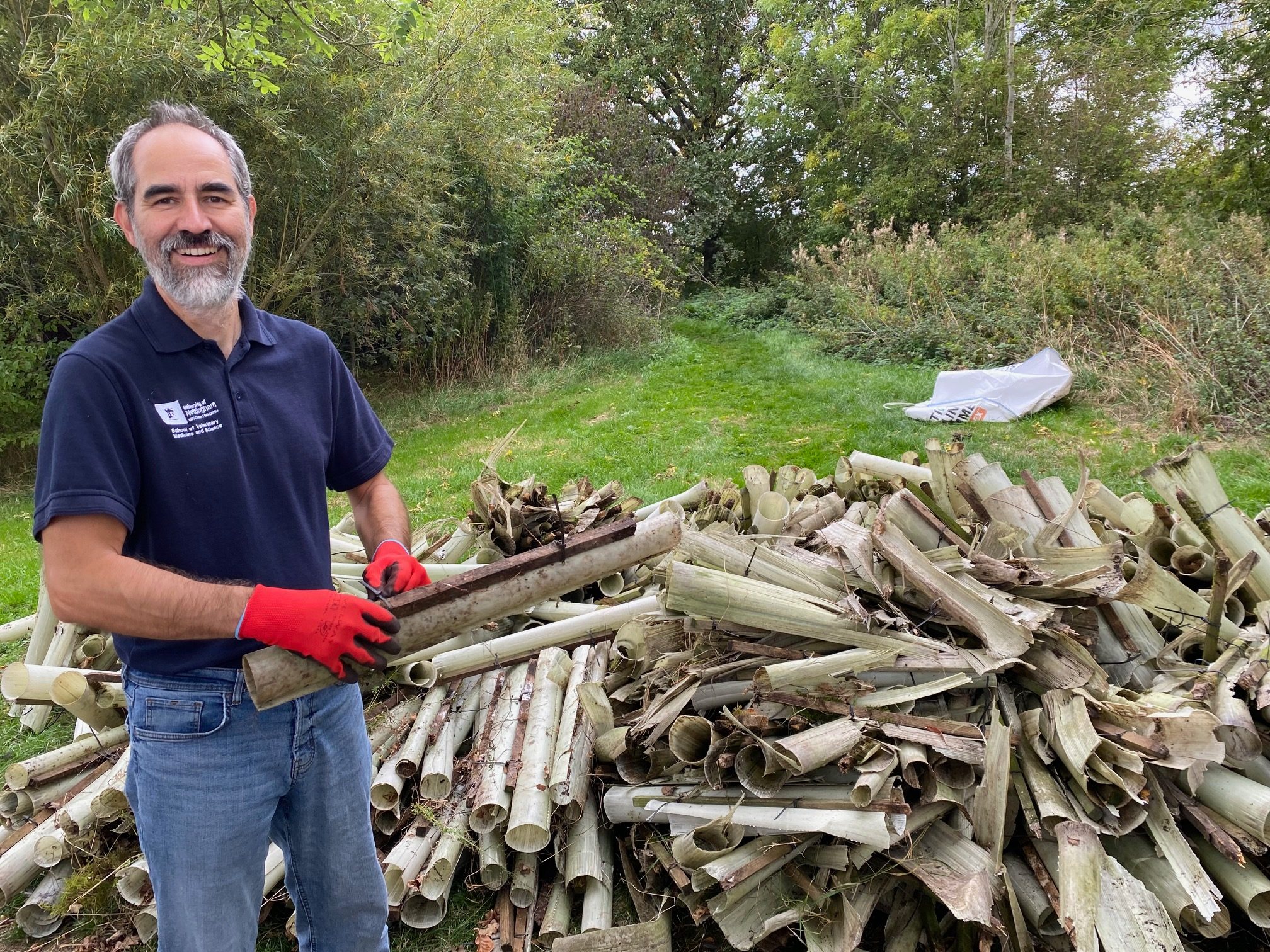
What role do bat and owl boxes play in supporting native species populations?
Supplementary habitats and nesting/roosting spaces, such as bat and owl boxes, are a management tool to provide additional space in areas where particular species may struggle to find appropriate nesting and hibernating areas.
This is usually the case in younger woodlands such as the areas we help to manage in the East Midlands, where younger trees lack certain natural features such as hollow trunks, cracks and crevices that provide homes for many species of invertebrates, small mammals and birds.
After putting up our first round of bat boxes in these woodlands, we captured at least three species of bat utilising them within the first week. This shows that there is a distinct lack of roosting areas here, and by supplementing these vital components with artificial boxes, we can help to relieve this pressure on these species.
As we now understand the need for veteran tree features in these newer woodlands, we plan to progress this management strategy further by erecting wood mould boxes, designed to create artificial habitats for invertebrate species whilst the trees mature and form their own natural crevices.
How do you balance public access and human activity with your conservation and rewilding goals?
Community engagement is instrumental to the success of any conservation project, whether that's gorilla conservation in Africa, habitat protection in Asia or rewilding in Europe.
The people who spend the most time in these areas and who live and work in the same spaces as our wildlife are the project’s most important stakeholders and must be treated as such. Involving local communities not only with plans of projects but also involving them in their creation and throughout the process will ensure the project’s longevity.
Educating local communities about what species are present, how to preserve them and why this is so important is critical to long-term success. In the UK, we actively involve as many people as possible in our land management efforts, from the seasoned professionals to the youngest members of the community; everyone can have a part to play.
We also engage with community members unable to practically contribute by showcasing our camera trap footage whenever we can, highlighting what species are in the area and at what time to encourage a sense of ownership over the land and responsibility to the creatures that depend on it.
We have had a fantastic response from the community when they see the camera trap footage, especially when viewing new species they never thought would be living right on their doorstep.
How does the local community get involved and support these efforts?
Here in the UK, we help the Sutton Bonington Climate Crisis and Biodiversity Action group organise monthly working groups, where members of the community and surrounding villages have the opportunity to come and contribute towards the land management of the area.
From laying hedges and coppicing woodland to litter picking and water testing, the community can get involved with hands-on conservation and contribute to keeping these natural spaces healthy and diverse.
We have also recently recruited three very enthusiastic volunteers to help us analyse camera trap footage. This involves identifying the species in every photo or video from our camera traps and logging it on the Wildlife Insight system to document which species are found where and in what abundance, which may then inform conservation practices at a later date.
This has been incredibly useful, especially when identifying the presence of threatened or invasive species.
What key lessons have you learned through this rewilding work?
All conservation, land management, or rewilding projects take a great deal of time, but what most people don't realise is that a lot of that time is spent at a desk, at a laptop, on a telephone, communicating, administering and building relationships with stakeholders.
There is a lot of legwork before even beginning to think about the practical elements of conservation, and collaborating with like-minded groups and organisations can help spread that load.
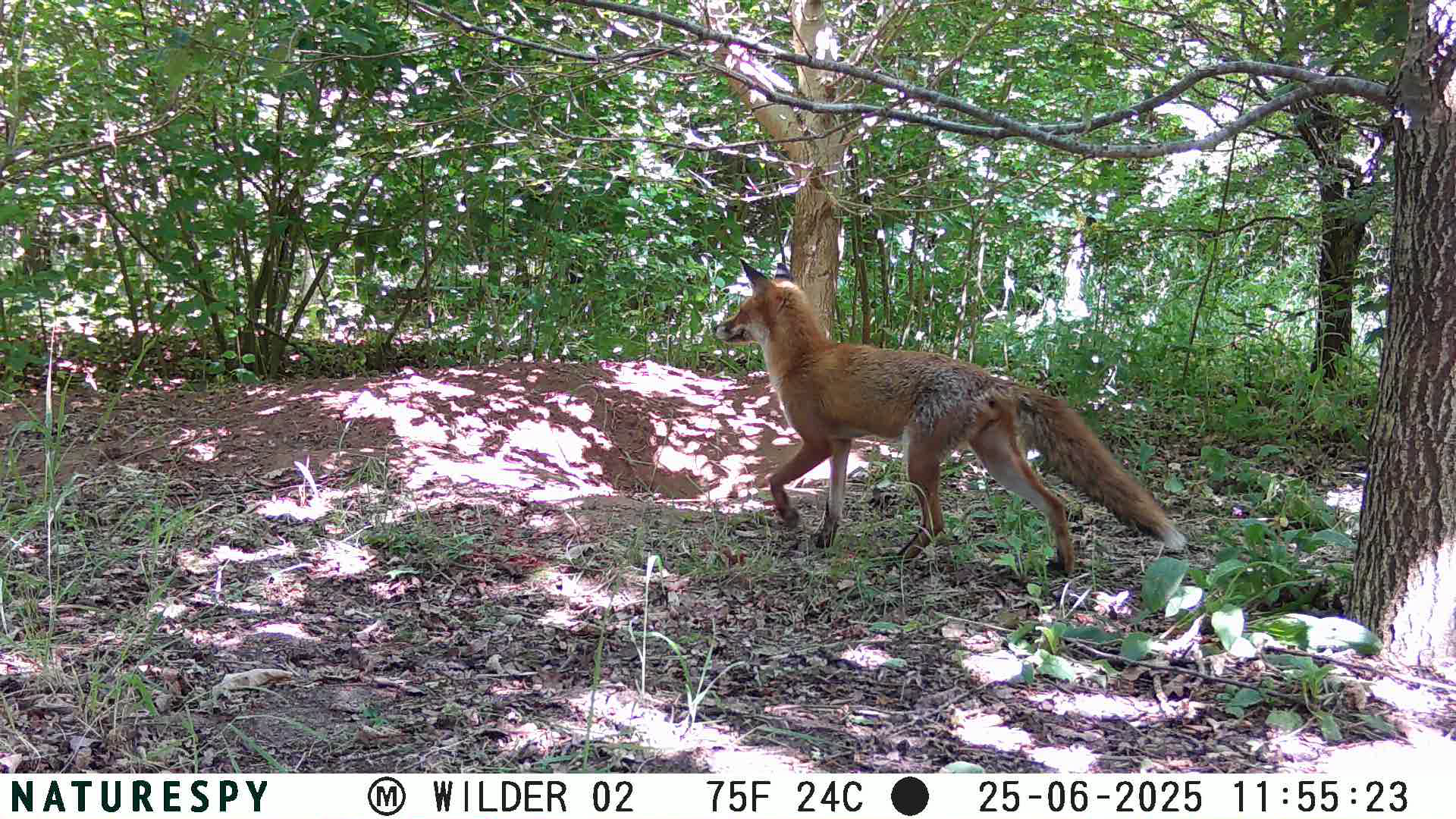
What upcoming initiatives or projects within the woodlands are you particularly excited about?
We have a number of exciting projects starting over the next few months, including a new partnership between Wilder International and the Canals and Rivers Trust to aid in the management of the River Soar that runs through and around some of our woodland sites.
This project will include wildlife surveys and bank management of the waterways surrounding the woodland to improve aquatic biodiversity and river health.
We will also be continuing with the management of the woodland and wetland areas in Diamond Jubilee woodland, which will involve coppicing and thinning certain areas, as well as creating a more durable wetland through the removal of particular tree species and excavation of further pond areas.
We will also be continuing our tree guard removal project to finish removing the guards from the Soar Lane site, which will then allow us to move this project to the second site to remove the guards there also. With around 40,000 guards still to remove, we have a big job ahead of us.
Still, with the help of the community and other conservation organisations, we can ensure these woodlands are as healthy as possible for both wildlife and people.
Sign up for the newsletter
By clicking on “Subscribe now” I will subscribe to the Conscious Explorer newsletter with all the information about mindful travel. Information on the success measurement included in the consent, the use of the shipping service provider MailChimp, logging of the registration and your rights of revocation can be found in our privacy policy.
